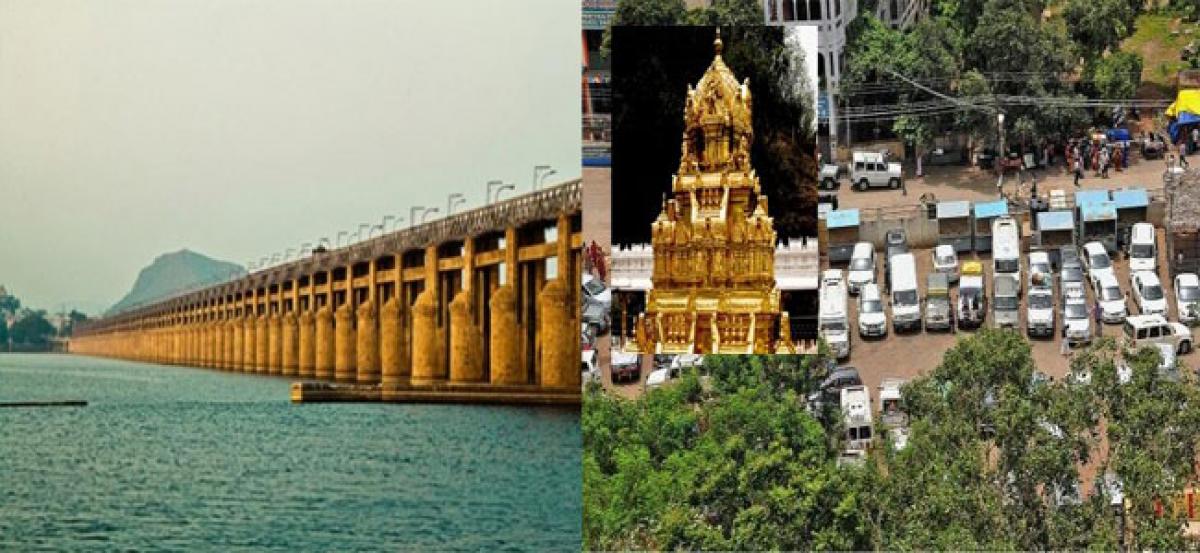Live
- Campaign on elimination of violence against women launched
- Youth Cong demands Adani's arrest
- HC seeks Centre's response on girl's plea to expedite rare disease treatment
- 5 dead, 4 injured in Hardoi road accident
- TTD makes preparation for vaikuntha ekadashi to be held from January 10
- Rajasthan cop succumbs to Dengue on way to hospital
- Sir Sorabji Memorial cricket tourney held
- 3 including 2 women held in murder case
- SP slams UP govt, calls it orchestrated
- Shot In The Arm For Tribals… Girijan Coop Corpn Ropes In City Firm To Digitalise Petrol Bunks
Just In

The city of Vijayawada has been witnessing migrations from various parts of 13 districts as the city has turned into an important commercial centre and adjacent to Andhra Pradesh’s capital Amaravati. For the past three decades, the city has witnessed huge migrations from Prakasam, Srikakulam, Vizianagaram, and Vishakapatnam districts. As per local authorities, nearly four lakh people are residing
Vijayawada: The city of Vijayawada has been witnessing migrations from various parts of 13 districts as the city has turned into an important commercial centre and adjacent to Andhra Pradesh’s capital Amaravati. For the past three decades, the city has witnessed huge migrations from Prakasam, Srikakulam, Vizianagaram, and Vishakapatnam districts. As per local authorities, nearly four lakh people are residing in the city from these four districts against the total of 11 lakh population.
Highlights:
- Once the city was confined to One Town, a few parts of Governorpet and Mogulrajapuram
- Later, it has expanded to various areas
- People from Srikakulam, Vizianagaram and Prakasam are top in migrants list
- Employees shifting from Hyderabad added to the city’s new culture
Now the migrations have increased from present developments like Amaravati capital city and administrative machinery functioning from Velagapudi of Guntur district. The city has now witnessed changes not only in physical appearance but also seen migrations from various walks of life from all the districts.
The city’s socio and economic structures are being changed due to migrations. Significantly the migrants have been playing dominating role in business and politics too by capturing opportunities. Once the city was confined to One Town, a few parts of Governorpet and Mogulrajapuram.
But, later it has expanded to various areas. The migrations were started based on business opportunities, particularly in transport and education sectors. According to officials, Bezawada emerged as a municipality in 1888 and upgraded into selection grade municipality in 1960. Now it has been expanded as a corporation in 61.88 square km radius.
During this process, the lakhs of people migrated from various districts. The people of north Andhra entered the city as Mutaa workers. Later they settled in various business establishments including fruit trade. They preferred to settle in present central constituency limits including Singhnagar, Durgapuram and Gandhinagar.
Likewise, nearly two lakh people reached to city from various areas in Prakasam district. Majority of them settled in West constituency limits at Bhavanipuram and Vidyadharapuram and Governorpet. They also formed as an association in the name of Malakonda Swamy. Now, they are settled in hotels, footwear and finance business.
The migrated sections of people entered politics and were elected as corporators. Likewise, the people from Rajasthan, Gujarat, Punjab entered the city and settled in wholesale, gold and finance business. They have been playing a dominating role in the city trade for the past three decades. The diverse city culture reached a peak after the state government employees moved from Hyderabad to Vijayawada, says erstwhile VUDA chairman Tumati Premnath.
By Patibandla Srinivas

© 2024 Hyderabad Media House Limited/The Hans India. All rights reserved. Powered by hocalwire.com







